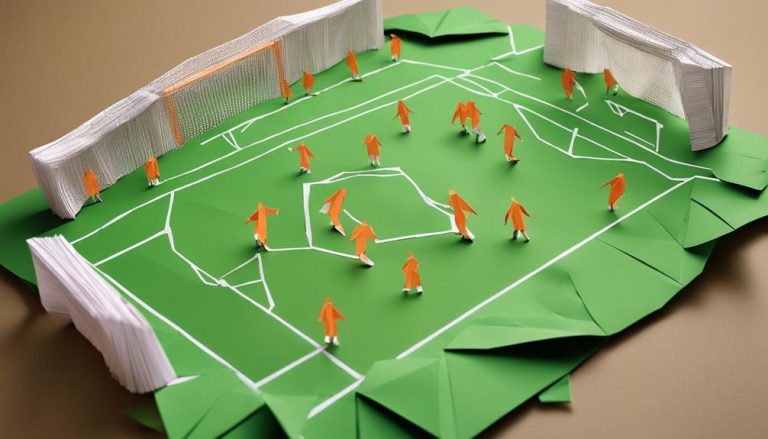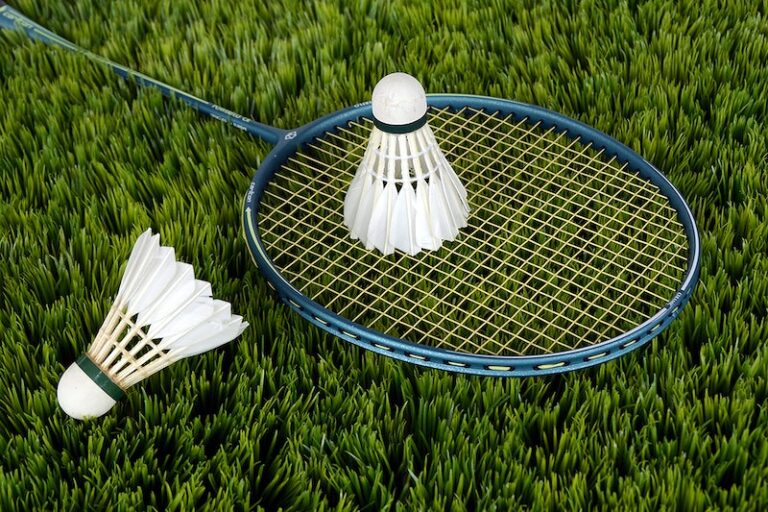General Rules of Ringette Sport
You might not be aware that ringette is a fast-paced and dynamic sport played on ice. As a player, understanding the general rules of ringette is important for a successful game. From the number of players on the ice to the equipment requirements and gameplay regulations, each aspect contributes to the overall flow of the game. Explore into the intricacies of ringette rules to enhance your knowledge and performance on the ice.
Number of Players
Typically, ringette teams consist of six players on the ice at a time, with one goaltender and five skaters. Understanding the roles and positions of each player is important in mastering team strategies and formations. Let's delve into the dynamics of these positions and how they contribute to the overall game plan.
The goaltender is the last line of defense, tasked with preventing the opposing team from scoring. Their role is pivotal, requiring keen focus and quick reflexes. Skilled goaltenders can turn the tide of a game with their saves, making them a cornerstone of any successful team.
The skaters, on the other hand, are divided into forwards and defense. Forwards are responsible for offensive plays, aiming to score goals and create scoring opportunities. Their speed and agility are essential in outmaneuvering the defense and challenging the opposing goaltender. On the flip side, defense players focus on protecting their own net, breaking up the opponent's plays, and supporting the goaltender when needed.
Team strategies and formations revolve around utilizing these roles effectively. Coaches often employ various formations depending on the situation, such as the diamond or triangle formation. These formations dictate player positioning on the ice, ensuring the best coverage and coordination. Understanding these strategies is key to executing plays seamlessly and outsmarting the opposition.
Playing Area
The dimensions of the ringette playing area are standardized to guarantee consistency and fairness in gameplay. The rink is typically 85 feet wide and 200 feet long, with rounded corners to facilitate continuous play. The ice surface is divided into three zones: defending, neutral, and attacking zones. Understanding the layout of the playing area is critical for developing effective strategy tactics and promoting efficient team communication.
To give you a better visual understanding, here is a breakdown of the ringette playing area:
| Zone | Dimensions |
|---|---|
| Defending | 85ft x 85ft |
| Neutral | 30ft x 85ft |
| Attacking | 85ft x 85ft |
Equipment Requirements
You need to make sure you have the mandatory safety gear, stick, and skates before hitting the ringette rink. These items are essential for your protection and performance during the game. Let's go over the equipment requirements to get you all set for a thrilling ringette match!
Mandatory Safety Gear
Ensuring proper and adequate safety gear is essential for all participants in ringette to prevent injuries and promote a safe playing environment. When gearing up for a game, make sure to have the following mandatory safety gear:
- Helmet Protection: A high-quality helmet is vital to safeguard your head from any impacts during the game. Make sure it fits securely and is in good condition.
- Mandatory Goggles: Goggles are necessary to protect your eyes from flying sticks, rings, or accidental contact. Choose goggles that provide clear vision without compromising safety.
- Face Masks: Face masks add an extra layer of protection for your face and teeth. Always ensure your face mask is securely attached to your helmet to prevent any injuries.
Stick and Skates
When gearing up for a game of ringette, it's important to make sure your stick and skates meet the required equipment standards for best performance and safety. Your stick is a crucial tool for stick handling, so make sure it is the correct length, typically coming up to your chin when standing in skates. Opt for a stick that allows you to control the ring effectively and execute precise passes. When it comes to skates, focus on comfort and support to enhance your skating techniques. Well-fitted skates can improve your agility and speed on the ice, giving you an edge during gameplay. Prioritize the quality of your stick and skates to elevate your performance and enjoyment of the sport.
Starting the Game
To initiate a game of ringette, the referee drops the ring at center ice, signaling the beginning of play. As the anticipation builds, the teams line up on opposite sides of the center line, ready to showcase their skills and strategy. Here's a breakdown of what you can expect during the start of a ringette game:
- Face off techniques: The face-off at the beginning of the game is important for gaining possession of the ring. Players must use their stick-handling skills and quick reflexes to outmaneuver their opponents and gain an early advantage.
- Team formation: Both teams carefully position their players during the start of the game, strategizing on how to best utilize their strengths and exploit their opponent's weaknesses. The formation chosen can set the tone for the entire match, so teams must be diligent in their planning.
- Game tactics: During the initial moments of the game, teams often employ specific tactics to gain an early lead. Whether it's aggressive forechecking, quick adjustments, or defensive solidity, each team will look to impose their game plan and gain control of the match from the opening face-off.
As the referee prepares to drop the ring, remember to stay focused, execute your game plan, and seize the opportunity to make an impact from the very start.
Gameplay Rules
Let's talk about the points in Ringette. Scoring rules determine how goals are counted, while penalty regulations outline consequences for rule violations. Understanding these aspects is important for players and officials to make sure fair gameplay.
Scoring Rules
Scoring in ringette involves shooting the ring into the opposing team's net to earn points. Understanding the scoring rules is essential for success in the game. Here are three key elements to keep in mind:
- Shot Clock: Each team has a limited amount of time to take a shot on goal, usually 30 seconds. This adds a strategic element to the game, requiring quick thinking and decisive action.
- Overtime Rules: In the event of a tie at the end of regulation time, teams will usually play a sudden-death overtime period. The first team to score during this period wins the game, adding excitement and suspense to the match.
- Point Allocation: Goals scored from different areas on the ice may be awarded different numbers of points, encouraging players to vary their shooting strategies for maximum effectiveness.
Penalty Regulations
Understanding the Penalty Regulations in ringette is important for maintaining fair gameplay and ensuring adherence to the rules of the sport. When a player commits a penalty, they are typically required to spend time in the penalty box, leading to player substitutions and potentially influencing game flow. Referee decisions regarding penalties are essential in maintaining order on the ice and ensuring that the game is played fairly. By having clear penalty regulations, the game can proceed smoothly without disruptions. Below is a table illustrating some common penalties and their corresponding consequences:
| Penalty Type | Description | Consequence |
|---|---|---|
| Body Contact | Physical interference | 2-minute penalty |
| Tripping | Tripping an opponent | 2-minute penalty |
| Slashing | Swinging stick at player | 2-minute penalty |
Penalties and Violations
When a player commits a penalty or violation in ringette, it results in consequences that can impact the flow and outcome of the game. Understanding penalties and violations is important for players to avoid infractions that may lead to disadvantageous situations for their team. Here are three key points to take into account in this aspect:
- Referee Signals: Referees use specific hand signals to indicate different penalties or violations during a ringette game. These signals are essential for players, coaches, and spectators to comprehend the decisions made by the officials promptly. Being familiar with these signals can help you adapt your gameplay to avoid penalties and better understand the calls made by the referees.
- Player Conduct: Maintaining good conduct on the ice is essential to prevent penalties and violations. Unsportsmanlike behavior, such as arguing with officials, dangerous plays, or intentional rule-breaking, can result in penalties that put your team at a disadvantage. By upholding proper player conduct, you contribute to a fair and enjoyable game for everyone involved.
- Rule Enforcement and Game Strategies: Understanding the rules of ringette and how they are enforced is important for developing effective game strategies. By knowing the regulations thoroughly, teams can strategize better, anticipate opponents' moves, and make informed decisions during gameplay to avoid penalties and violations. Adhering to the rules while devising smart game strategies can enhance your team's performance and increase the chances of success on the ice.
Scoring System
To grasp the dynamics of scoring in ringette, familiarize yourself with the point allocation system. In ringette, a goal is worth one point, and the team with the most points at the end of the game wins. However, scoring in ringette is not only about putting the ring in the net; it involves strategic gameplay, goalie positioning, offensive tactics, power play strategies, and defensive techniques.
| Scoring System | Description | Importance |
|---|---|---|
| Goal | Scores 1 point | Essential for winning |
| Assists | Passes leading to goals | Recognizing teamwork |
| Power Play | Scoring with a player advantage | Capitalizing on opportunities |
| Empty Net Goal | Scoring when the opposing team has no goalie | Sealing the victory |
Goalie positioning is vital in preventing goals, as they need to anticipate the shots and make timely saves. Offensive tactics involve creating scoring opportunities by working together as a team, using strategies to outsmart the defense. On the other hand, power play strategies and defensive techniques play key roles in either maintaining a lead or making a comeback during crucial moments of the game. Understanding the scoring system and the associated strategies will enhance your appreciation of the intricacies of ringette gameplay.
Game Duration
The game duration in ringette is structured to guarantee a balanced and competitive playing field for all teams involved. Understanding the timing of a ringette game is important for effective strategy techniques and skill development. Here are three key points to take into account regarding game duration:
- Strategic Time Management: Ringette games are typically divided into three periods, each lasting 15 minutes. This structured timing allows teams to plan their gameplay strategically, making quick decisions to outmaneuver opponents. Teams can utilize the breaks between periods to regroup, analyze their performance, and adjust their strategies accordingly.
- Fitness Training Opportunity: The duration of a ringette game provides an excellent opportunity for fitness training. Players need to maintain high levels of endurance and stamina throughout the game to keep up with the fast-paced nature of ringette. By incorporating game simulations into training sessions, players can improve their cardiovascular fitness and endurance, enhancing their overall performance on the ice.
- Skill Development Under Pressure: The time constraints of a ringette game create a pressure-filled environment that challenges players to perform their best under stress. This pressure cooker situation fosters skill development as players learn to make split-second decisions, execute precise passes, and take accurate shots while under the clock's ticking pressure.
Understanding the significance of game duration in ringette is essential for players looking to enhance their strategic abilities, fitness levels, and overall performance on the ice.
Frequently Asked Questions
Can Players Switch Positions During a Game?
In the heat of the game, you strategize player substitutions to outsmart opponents. Position flexibility adds depth to team dynamics, enhancing your gameplay. Embrace the fluidity of roles to execute winning tactics.
Are There Any Restrictions on How Players Can Pass the Ring?
When it comes to passing the ring in ringette, players have the freedom to get creative. Different passing techniques and strategic passing plays can be utilized to outsmart opponents and enhance teamwork on the ice.
Is There a Time Limit for How Long a Team Can Possess the Ring Before They Must Take a Shot?
Alright, here's the deal – in ringette, there's no official shot clock. However, teams must adhere to a ring possession rule that encourages offensive strategy and time management to maintain gameplay flow.
Are There Any Specific Rules for Goalies in Ringette?
As a goalie in ringette, you have specific rules regarding equipment and positioning. Goalie equipment includes a helmet, throat protector, chest protector, gloves, and leg pads. Proper positioning involves staying within the crease to defend your net effectively.
How Are Tie Games Resolved in Ringette?
When a tie game occurs in ringette, overtime rules kick in. Teams battle it out for a decisive goal. If still tied, a shootout resolution is used. Referee decisions guarantee fair play and ultimate victory.






